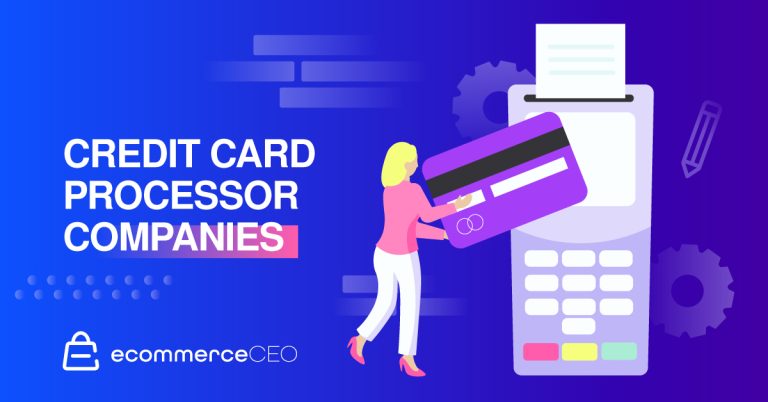
- Posted on
- • March 19, 2021
- Ecommerce 101

This blog was originally published on July 29, 2010 and last updated on July 15, 2021.
The growth of ecommerce has opened up even more opportunities for sellers to thrive and succeed online. However, greater demand also brings new challenges, questions, and concerns. It’s time to put to rest some of the misconceptions about ecommerce that can stop your business from driving sales and reaching its full potential.
In this article, we debunk the most common ecommerce myths and discuss what it really takes to manage a successful online store.
Myth 1: “There’s too much competition online.”
As ecommerce sales continue to grow, we’ll see more and more shoppers taking their purchases online. While the ecommerce space is competitive, there is still tremendous opportunity for businesses to stand out and reach an entirely new audience. Even in highly competitive industries, long-term ecommerce success can be achieved through agility, strategy, and resilience.

Myth 2: “An ecommerce website should be free/cheap.”
An online storefront is just like a physical location in that you need to invest in it to drive interests, increase sales, and see results…but unlike a brick-and-mortar store, your online storefront has the potential to reach countless customers regardless of physical location. With this virtually unlimited growth potential, your online store is a great place to invest to increase reach and grow your business.

Myth 3: “My customers don’t want to buy online.”
If the digital shift of 2020 has taught us anything it’s that buyers can and do purchase just about everything online. If your customers are reluctant to transition away from ordering in person, it may be because your current website isn’t meeting their ordering needs and providing a compelling reason to purchase from you. Failure to provide reassurance, guidance, convenience, inventory visibility, customization options, security, and personalization throughout the purchase process will discourage otherwise enthusiastic customers from completing orders.
Myth 4: “I don’t need to optimize my website.”
In ecommerce, you can’t just create a website and then forget about it. A solid website serves as your foundation, but there will always be things you can do to optimize, improve, and expand your website. You need to stay current with industry trends, keep a pulse on your customers’ behavior and motivations, and be aware of what works and does not work for your business. Doing nothing with your website can be extremely detrimental to your bottom line.
Myth 5: “I’m already making sales so I don’t need to change anything.”
Here’s the thing: ecommerce moves fast. With things constantly changing and consumer brand preferences in flux, you need to be adapting your business to stay competitive. Failure to innovate can turn even the most well-designed sites into outdated ones with low traffic and disappointed customers. Innovation allows your product merchandising, site design, checkout process, promotional campaigns, and overall brand experience to measure up against the competition and set your business apart.

Myth 6: “Price is the only thing shoppers care about.”
While price is an important consideration for many shoppers, it is unrealistic for most businesses to sell their products at the lowest prices. Shoppers look at other factors when shopping online, such as convenience, flexibility, and user experience, and some even consider the company’s social responsibility and community involvement. Instead, consider setting your business apart by building trust, creating authority, and offering benefits like top-notch customer service, exclusive product selections, and ease of shopping.
Myth 7: “My products will sell themselves.”
While your products may be unique, they cannot stand out online without proper channels for acquiring and retaining customers. You’ll need to employ marketing tactics like paid ads, search, email, content, and social marketing to increase demand for your business, attract visitors, and nurture shoppers into repeat customers. You’ll also need to strategically position your products in your messaging, leverage merchandising tools, and continuously communicate your unique value for your products to stand out from your competitors.
Myth 8: “Headless is the only way to get a totally custom site.”
Headless commerce has been generating a lot of buzz recently. “Headless” refers to an ecommerce solution that separates the front end and back end of a website, allowing sellers to leverage a modern tech stack to fully customize the front-end experience of their website. A headless architecture requires significant investment and constant maintenance, so for many online sellers website customization is better handled with a flexible ecommerce platform.
Myth 9: “It’s too much work to sell through other channels.”
In the current commercial landscape, many businesses are shifting their sales models to explore new channels and bring in additional sources of revenue. Product manufacturers affected by store closures are selling direct-to-consumer while offline B2B companies are digitalizing their businesses to reach modern buyers. With online selling solutions evolving to accommodate these shifts, it’s easier than ever to expand into new channels and reach new markets.
Myth 10: “My site cannot compete with the marketplaces.”
It’s no secret that marketplaces like Amazon are major players in the ecommerce space. And while Amazon and other marketplaces can be an effective demand driver and supplemental sales channel for your business, having a strong independent online presence gives you greater control over your business’ success. There are also plenty of things you can do that Amazon can’t to create an outstanding and memorable experience that keeps shoppers coming back.

Stop Believing in Ecommerce Myths
Even the most successful companies can be duped by the myths that keep them from achieving online success. Now that you’ve seen some of those beliefs put to rest, start looking at the areas where you are seeing unnecessary limitations to your growth and where you might be missing out on key opportunities.
For 25 years, we’ve helped lot of businesses identify and overcome the myths and misconceptions getting in the way of their business’ growth and success. If you think there is something that is hindering your business from truly succeeding online, give us a call.






